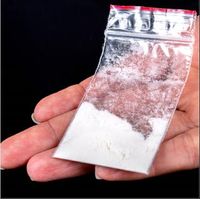The purpose of this article is not to suggest that fentanyl or other drugs purchased from the unregulated contaminated criminalized market in Canada pose no potential danger. Instead, I wish to focus on the harmful impacts which misinformation regarding the dangers of an incidental overdose or “contact high” from having close or incidental exposure or simply touching fentanyl or one of its analogues. Examples of this include breathing in fentanyl in situations where the drug is present or in close proximity when entering a car or room. This has been repetitively exaggerated in mass media, frequent anecdotal accounts, and by organizations including municipal police forces.
Fentanyl has been used for legally approved medical purposes for decades around the world and is still widely used in medicine today. “Fentanyl in the illicit drug supply comes in powder or solid form and must have direct contact with mucous membranes or the bloodstream via snorting (inhalation), smoking, or injection to take effect.”
Sources including the government of Canada’s official website corroborate this in a section entitled “What you need to know about fentanyl exposure”:
“If you have come into contact with fentanyl or other synthetic opioids, know that skin exposure to fentanyl is extremely unlikely to immediately harm you …For first responders: Treating someone who has overdosed from an opioid does not pose a significant threat to your health.”
While Canada’s current government website acknowledges the falsehood of the fentanyl contact high myth, the Canadian media and criminal-legal system is rife with accounts and protocols linked to misinformation regarding fentanyl exposure going back years. A 2016 CBC news story recounts statements made by Windsor Police Inspector Dave Bishop, who warned: “We've had to do some significant changes even just within our own service here in regards to the handling of those drugs once they're seized just because of the relative danger of them…EMS has the same concerns, too, as they're coming across overdoses and that sort of thing because even just the tiniest amount of that drug can be very dangerous as far as handling, ingestion, even skin contact, so it's really changing some things here.”
“Despite scientific consensus debunking such risk” and the overwhelming availability of information to the contrary in academic literature and government websites the idea that incidental exposure to fentanyl can lead to overdoses, particularly people without a tolerance or experience using opioids or in animals, continues to be massively sensationalized in the news, social media and other online sources, print articles, and television programs. Popularized police television programs such as Blue Bloods, Chicago PD, Hudson and Rex, CSI, and Hightown all have episodes in recent seasons that depict situations where various characters experience an overdose or even death due to skin contact or having come in close proximity to fentanyl.
“The probability that the deputy shown in that video experienced harm related to opioid exposure is zero percent…Absolutely nothing in that video is consistent with an opioid overdose.”
A segment on the popular television program Last Week Tonight with John Oliver tells the story of a widely circulated video in which a San Diego Sheriff’s Deputy subsequently fell backward and professedly overdosed after discovering fentanyl in the trunk of a car with his partner. Responses to this specific exaggerated video are not limited to John Oliver’s show. Lucas Hill, a clinical assistant professor of pharmacy practice at the University of Texas at Austin, helped organize a petition entitled “Retraction Request for Dangerous Drug Misinformation” which focused on the video and the dissemination of inaccurate information by various media outlets which perpetuate “a myth: that casual contact with potent synthetic opioids such as fentanyl poses a health risk to first responders.” The petition focused on and was signed by numerous experts, doctors, and academics. Hill is quoted in a Washington Post article stating: “The probability that the deputy shown in that video experienced harm related to opioid exposure is zero percent… Absolutely nothing in that video is consistent with an opioid overdose” and this “dangerous misinformation that can cause harm both to people who use opioids and to members of the law enforcement community.” Oliver’s response to the video: “If you don’t ingest or inject fentanyl — or climb into a wind tunnel and then release several trash bags full of it — you’re fine.”
Even if we were to go far enough back to claim a lack of awareness of the academic literature and government sources that debunk such narratives, the application of a little bit of logic and common sense alone combined with some basic observations and a cursory examination of how drugs are bought, sold, and used would lay consideration of the fentanyl exposure myth to rest.
Those who sell and consume fentanyl are regular people, with pets, families and friends who may not happen to use the drug, have almost certainly been exposed to fentanyl to some degree, and are not dying en masse. Most individuals involved in the drug trade are likely not to handle their fentanyl using protective gloves, eye protection, masks, respirators, and bodysuits while moving through everyday society (and dare I say even behind closed doors). Everyone who uses fentanyl for the first time almost certainly touches it with their fingers before ingestion. Considering that 24,626 apparent opioid toxicity deaths have occurred between January 2016 and June 2021, and fentanyl use has become widespread and is now “prevalent on the illegal drug market”, it stands to reason that many individuals, specifically those who buy, sell and use fentanyl have had skin contact with the drug. It also stands to reason that first time users of fentanyl are touching and ingesting this drug, and many survive to use it a second time.
This is not some sort of biological weapon (as John Oliver also points out) whereby individuals first touch the drug then overdose or die. Many individuals intentionally ingest the drug on an ongoing basis and live to use another day. Methadone clinics are full of fentanyl users seeking to quell withdrawals from long-term fentanyl use. It should also be considered that many drug dealers do not necessarily use fentanyl themselves, and therefore have no tolerance whatsoever to the drug, yet come into contact with it on an ongoing basis when conducting business. While drug users ingest fentanyl in supervised consumption sites where staff and drug users may wear protective equipment such as masks and face shields to stop the spread of COVID-19, these workers do not wear similar protective equipment to prevent accidental skin contact with fentanyl. In site of all of this logic and evidence to the contrary, the myth of incidental overdose from skin exposure to fentanyl persists.
Hysteria around drug use is nothing new. Fear-based mythology surrounding fentanyl, opioids, and drug use has a long sordid history. From the Protestant Christian ethic -- which saw drugs as a corrupting force as far back as the 1700s to the temperance movement and alcohol prohibition -- widely-held views which saw drug use as being a social evil evolved. More recent manifestations of this include (but are not limited to) the Crack-cocaine scares of the 1980s and fears regarding ecstasy/MDMA use in the rave culture of the 1990s. Cannabis use was also demonized for most of the 20th century, beginning as far back as the early 1900s and solidified through racism and propaganda films like Reefer Madness. The ramifications are immense.
Negative outcomes of fentanyl hysteria are far reaching. Increased stigma around fentanyl, opioids, and drug culture persist. Changes to existing drug laws have been slow, despite growing public support for an end to drug prohibition. Other negative outcomes include elevated levels of burnout and stress on paramedics, firefighters, and police officers who, when responding to overdoses, struggle to differentiate fact from fiction with lives hanging in the balance.
“The news media has definitely latched on to the fact that these more potent opioids are driving the number of deaths, and so they’ve kind of taken on popular boogeyman characteristics.”
In an age where media representations, especially of highly politicized topics, are complex to say the least, images and stories which are easily sensationalized, can be embellished at the expense of entire communities. Those outside of the mainstream are easy targets, and the myths surrounding fentanyl exposure are not victimless narratives. Prosecutors in the United States have incarcerated people for the ostensible crime of “allegedly exposing first responders to fentanyl.” The State of Massachusetts even banned evidence that may contain fentanyl or its analogues from courthouses due to hysteria surrounding the drug.
In an interview with EMSWorld, Dr. Ryan Marino, an emergency physician and toxicology fellow at the University of Pittsburgh, gave his take on the media’s fentanyl agenda: “The news media has definitely latched on to the fact that these more potent opioids are driving the number of deaths, and so they’ve kind of taken on popular boogeyman characteristics. It makes it much easier to blame fentanyl than anything else.” The result is, that even as fentanyl is painted as the culprit, it is people, namely drug users and marginalized communities, that pay the price.
For decades, drug users have been, and continue to be, targets and casualties of this stigma and criminalized discourse. Capitalist money incentivizes the control of major media outlets by the private sector – which has consolidated its control of news sources for decades – further complicating this issue. Concrete strategies which address these complex issues take time, if they materialize at all. Hopefully governments will work diligently to release evidence-based educational resources to combat widespread misinformation about drug use. Independent journalists, drug user organizations, the harm reduction community and our allies must work with other voices sympathetic to our cause to spread truth and stop the ongoing hysteria around drug use, particularly fentanyl. Hopefully we make a dent.




